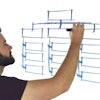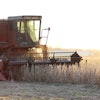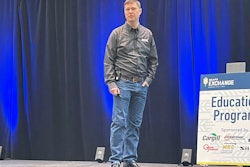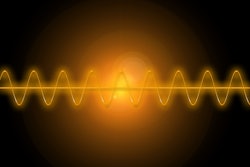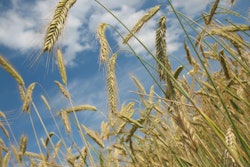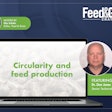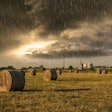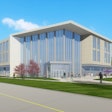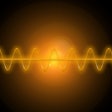Transcription of Feed & Grain Chat with Matt Zabel, Solutions Architect - Digital Energy for Faith Technologies
Elise Schafer, editor of Feed & Grain:Hi, everyone, and welcome toFeed & Grain Chat.I'm your host Elise Schafer, editor ofFeed & Grain.This edition of Feed & Grain Chat is brought to you byWATT Global MediaandFeedandgrain.com.Feedandgrain.com is your source for the latest news,product and equipmentinformation for the grain handling and feed manufacturing industries.
Today I'm joined on Zoom by Matt Zabel, solutions architect digital energy forFaith Technologies, a Wisconsin-based firm specializing in engineering, construction, manufacturing and clean energy. Hi Matt, how are you?
Matt Zabel, Solutions Architect - Digital Energy forFaith Technologies:I'm doing good Elise. Thank you.
Schafer:Well, thanks for coming on today. Let's get right into it. Can you explain how power metering and power quality metering works, and what kind of information can it provide about an agricultural facility?
Zabel:Sure, a couple of things will come into a power meter, so in anticipation of this, I actually have a little cute, basic energy meter here that I brought along, and for a device like this, if you want to meter, let's say, the main feed to a panel board or switchboard, you're going to have a breaker or a fuse somewhere inside of the system that you're going to feed the power to this power monitor with. It’s going to be looking at all three phases of your voltage. Okay, so that's going to give you a voltage signal.
And then you're also going to have something called a current transformer, which is a coil, and typically we use a split core — I'll zoom that in there — we use a split core CT or current transformer, so that the existing wire that's in the facility can go right through that current transformer and we can close it up. And what this device does, you can see the arrow on the front here, what this device does is without touching the wire, it can sense — because of the coils going around the wire — how much current is going through it. So then in my power meter, I have a voltage and I have a current which makes which means I can figure out how much power I have going through my circuit.
Another thing, that CT, that current transformer that we just looked at was pretty small, but they also come in much bigger sizes for your larger feeds in your facility. They also come in split core varieties, so that you can easily clamp them around existing wires, and we can put little safety pins in so that it doesn't come out.
So once you get that signal with the voltage, the amperage, to your to your energy meter, a basic energy meter is going to report out on things like volts, amps, kilowatts, kilowatt hours. It'll also tell you what your power factor is.Power factor— if any of you attendedGEAPS [Exchange], we talked about that quite a bit — where if your current and your voltage, or if your current is lagging your voltage because you have a lot of across the line starters in your facility, the utility can penalize you for that depending on what your rates and tariffs are.
So again, that basic meter is going to be useful for tracking and trending your power usage and it's also going to help you see as you make process changes, how are you conserving or how are you negatively impacting your electrical usage. And then over time, obviously, the goal with installing one of these is that you'll be able to make changes in your process and in your operations that will allow you to use less energy, or to shift the energy usage to a time when you get charged less.
Now when you have a more advanced meter, that's when they start looking at things like harmonics, voltage disturbances, other concerns. It can help you understand, we've got all of our power in in the United States is a 60 hertz wave, and that 60 hertz wave should be a nice clean sine wave. Well, some of the more advanced meters can help you understand how dirty or noisy that power is that can damage equipment like drives, LEDs and motors.
And then finally, one more item there's power quality meters. Power quality meters have all the same pieces, but I talked about that 60 hertz wave on your voltage and your current, the power quality meter is sampling that waveform at a very high rate of speed between 8,000 and 60,000 samples a second, so when you have a brownout in your facility, or an unexpected equipment shut down, these devices can help you understand specifically, what type of power quality issue do you have. Was it a voltage sag or voltage swell? How bad was it? Did the utility cause it? Was it was it from something inside your facility?
You know, a power quality meter is also going to catch things that maybe didn't shut you down but aren't being kind to your equipment. When there's little voltage drops here and there are little voltage swells here and there, your equipment can be can get electrically beat up — the capacitors inside of the equipment can get beat up — and they don't last as long. So as a company, we always encourage clients at a minimum to install a power quality meter with their new switchboards because if you ever have a power quality issue, they quickly pay for themselves.
Schafer:What are the first steps that need to be taken, or equipment involved in implementing a metering and monitoring system?
Zabel:Step one is really sitting down with a technical expert in these systems to discuss what your company's goals are, and talk about what you're experiencing right now at your facilities. You need to answer questions like, are we going to expand someday? Are we going to want to add solar someday? What about an EV charger for some onsite trucks or some small tractors? Then it's also really important to ask yourself who's going to look at this data? And in, you know, what do we expect? What benefit do we expect to get from this? And then also, we need to answer the question, what information would the system need to provide for anyone reporting on sustainability information for our company? We want to design it with answering those questions in mind.
The next step after you answer those questions, after the needs are defined, would be building a budget with that technical expert, and adjusting the concepts of what the system would include to meet the needs. At this point, it's pretty important that some sort of an operational leader is involved to get sign off on the budget and sign off on the scope of where things are going. And then finally, at that point, you know, work with your trusted provider or a couple of trusted providers to get you a proposal to implement that at your facility.
Schafer:Fantastic. Now what are the long-term benefits or cost savings that can be expected from a system like this?
Zabel:Department of Energy studies when they looked at a metering and monitoring system put in buildings show a 3% to 20% energy cost reduction when someone's actually acting on the data from a metering and monitoring system. Now, as a company, we tend to be a little bit more conservative, and we say 3% to 10% energy cost savings, but in a grain elevator, as you add VFDs and other automation into your conveyance, dust and aeration systems, the metering is going to help you dial in the right ramp rates and automation settings to save energy costs.
It's also going to help you justify automating other parts of your facility. Because let's say there was a very large conveyor that you put a VFD on and you automated it to ramp up and ramp down at certain times to save energy. Well now, with the meter that you've installed, you have the data to show what you've saved there to go back to your operations, old operations leadership and get more money to do the next conveyor.
Schafer:Well, thank you so much for your insights today, Matt.
Zabel:Thank you very much, Elise. It was really nice talking to you.
Schafer:Yes, likewise. That's all for today'sFeed & Grain Chat.如果你想看到更多这样的视频,潜艇cribe to ourYouTubechannel, sign up for the行业观察日常eNewsletter, or go to feedandgrain.com and search ourvideos.Thank you again for joining, and we hope to see you next time!


